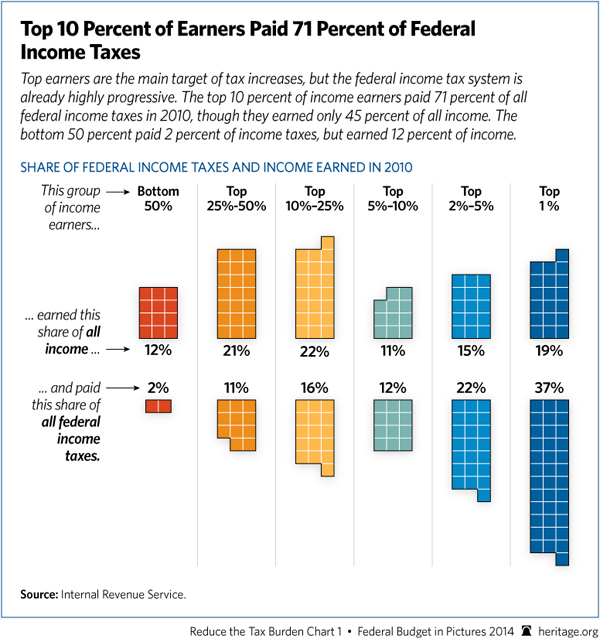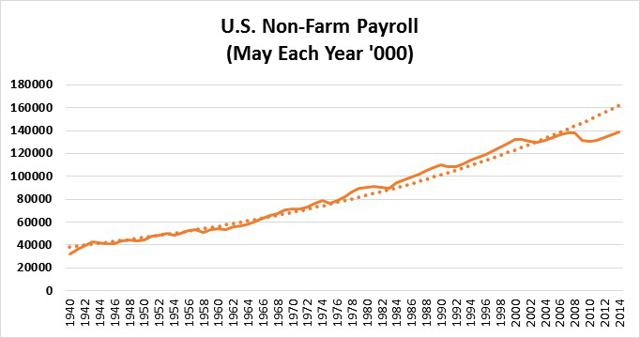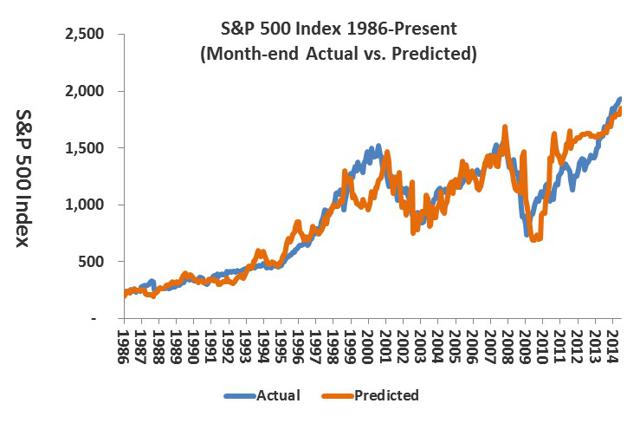"The End of History" 25 Years Later by Francis Fukuyama
25 years ago Francis Fukuyama published his famous essay called The End of History. On June 6, 2014 he published an "update" to his essay. It is worth the read. This update is below. The bold emphasis is mine. From the Wall Street Journal:
Twenty-five years ago, I wrote the essay "The End of History?" for a small journal called the National Interest. It was the spring of 1989, and for those of us who had been caught up in the big political and ideological debates of the Cold War, it was an incredible moment. The piece appeared a few months before the fall of the Berlin Wall, right about the time that pro-democracy protests were taking place in Beijing's Tiananmen Square and in the midst of a wave of democratic transitions in Eastern Europe, Latin America, Asia and sub-Saharan Africa.
I argued that History (in the grand philosophical sense) was turning out very differently from what thinkers on the left had imagined. The process of economic and political modernization was leading not to communism, as the Marxists had asserted and the Soviet Union had avowed, but to some form of liberal democracy and a market economy. History, I wrote, appeared to culminate in liberty: elected governments, individual rights, an economic system in which capital and labor circulated with relatively modest state oversight.
Looking back at that essay from the present moment, let's begin with an obvious point: The year 2014 feels very different from 1989.
Russia is a menacing electoral authoritarian regime fueled by petrodollars, seeking to bully its neighbors and take back territories lost when the Soviet Union dissolved in 1991. China remains authoritarian but now has the second-largest economy in the world, as well as its own territorial ambitions in the South and East China Seas. As the foreign-policy analyst Walter Russell Mead recently wrote, old-fashioned geopolitics has returned big time, and global stability is being threatened at both ends of Eurasia.
The problem in today's world isn't just that authoritarian powers are on the move but that many existing democracies aren't doing well either. Take Thailand, whose frayed political fabric gave way last month to a military coup, or Bangladesh, whose system remains in thrall to two corrupt political machines. Many countries that seemed to have made successful democratic transitions—Turkey, Sri Lanka, Nicaragua—have been backsliding into authoritarian practices. Others, including recent additions to the European Union like Romania and Bulgaria, are still plagued by corruption.
And then there are the developed democracies. Both the U.S. and the European Union experienced severe financial crises in the past decade, which meant anemic growth and high unemployment, especially for young people. Though the U.S. economy has now started to expand again, the benefits haven't been evenly shared, and the country's polarized and partisan political system hardly seems a shining example for other democracies.
So has my end-of-history hypothesis been proven wrong, or if not wrong, in need of serious revision? I believe that the underlying idea remains essentially correct, but I also now understand many things about the nature of political development that I saw less clearly during the heady days of 1989.
When observing broad historical trends, it is important not to get carried away by short-term developments. The hallmark of a durable political system is its long-term sustainability, not its performance in any given decade.
Let's consider, to begin with, how dramatically economic and political systems have changed over the last two generations. On the economic front, the world economy saw a massive increase in output, roughly quadrupling between the early 1970s and the financial crisis of 2007-08. Though the crisis was a large setback, levels of prosperity throughout the world have increased massively and on all continents. This has come about because the world has been knit together in a liberal system of trade and investment. Even in communist countries such as China and Vietnam, market rules and competition dominate.
Huge changes have taken place in the political sphere as well. In 1974, according to the Stanford University democracy expert Larry Diamond, there were only about 35 electoral democracies, which represented something less than 30% of the world's countries. By 2013, that number had expanded to about 120, or more than 60% of the total. The year 1989 marked only a sudden acceleration of a broader trend that the late Harvard political scientist Samuel Huntington labeled the "third wave" of democratization, a wave that had begun with the transitions in southern Europe and Latin America some 15 years earlier and would later spread to sub-Saharan Africa and Asia.
The emergence of a market-based global economic order and the spread of democracy are clearly linked. Democracy has always rested on a broad middle class, and the ranks of prosperous, property-holding citizens have ballooned everywhere in the past generation. Wealthier, better-educated populations are typically much more demanding of their governments—and because they pay taxes, they feel entitled to hold public officials accountable. Many of the world's most stubborn bastions of authoritarianism are oil-rich states such as Russia, Venezuela or the regimes in the Persian Gulf, where the "resource curse," as it has been called, gives the government enormous revenues from a source other than the people themselves.
Even granting the ability of oil-rich autocrats to resist change, we have since 2005 witnessed what Dr. Diamond calls a global "democratic recession." According to Freedom House, which publishes widely used measures of political and civil liberties, there has been a decline in both the number and the quality of democracies (integrity of elections, freedom of the press, etc.) over the past eight consecutive years.
But let's put this democratic recession in perspective: While we may worry about authoritarian trends in Russia, Thailand or Nicaragua, all of these countries were unambiguous dictatorships in the 1970s. Despite those thrilling revolutionary days in Cairo's Tahrir Square in 2011, the Arab Spring doesn't look like it will yield a real democracy anywhere but the country where it started, Tunisia. Still, it is likely to mean more responsive Arab politics over the long haul. Expectations that this would happen quickly were extremely unrealistic. We forget that following the revolutions of 1848—Europe's "Springtime of Peoples"—democracy took another 70 years to consolidate.
In the realm of ideas, moreover, liberal democracy still doesn't have any real competitors. Vladimir Putin's Russia and the ayatollahs' Iran pay homage to democratic ideals even as they trample them in practice. Why else bother to hold sham referendums on "self-determination" in eastern Ukraine? Some radicals in the Middle East may dream of restoring an Islamist caliphate, but this isn't the choice of the vast majority of people living in Muslim countries. The only system out there that would appear to be at all competitive with liberal democracy is the so-called "China model," which mixes authoritarian government with a partially market-based economy and a high level of technocratic and technological competence.
Yet if asked to bet whether, 50 years from now, the U.S. and Europe would look more like China politically or vice versa, I would pick the latter without hesitation. There are many reasons to think that the China model isn't sustainable. The system's legitimacy and the party's ongoing rule rest on continued high levels of growth, which simply won't be forthcoming as China seeks to make the transition from a middle-income country to a high-income one.
China has accumulated huge hidden liabilities by poisoning its soil and air, and while the government remains more responsive than most authoritarian systems, the country's growing middle class likely won't accept the current system of corrupt paternalism when times get tough. China no longer projects a universalistic ideal beyond its own borders, as it did in the revolutionary days of Mao. With its rising levels of inequality and the massive advantages enjoyed by the politically connected, the "Chinese dream" represents nothing more than a route for a relative few to get rich quickly.
None of this means, however, that we can rest content with democracy's performance over the past couple of decades. My end-of-history hypothesis was never intended to be deterministic or a simple prediction of liberal democracy's inevitable triumph around the world. Democracies survive and succeed only because people are willing to fight for the rule of law, human rights and political accountability. Such societies depend on leadership, organizational ability and sheer good luck.
The biggest single problem in societies aspiring to be democratic has been their failure to provide the substance of what people want from government: personal security, shared economic growth and the basic public services (especially education, health care and infrastructure) that are needed to achieve individual opportunity. Proponents of democracy focus, for understandable reasons, on limiting the powers of tyrannical or predatory states. But they don't spend as much time thinking about how to govern effectively. They are, in Woodrow Wilson's phrase, more interested in "controlling than in energizing government."
This was the failure of the 2004 Orange Revolution in Ukraine, which toppled Viktor Yanukovych for the first time. The leaders who came to power through those protests—Viktor Yushchenko and Yulia Tymoshenko—wasted their energy on internal squabbling and shady deals. Had an effective democratic administration come to power, cleaning up corruption in Kiev and making the state's institutions more trustworthy, the government might have established its legitimacy across Ukraine, including the Russian-speaking east, long before Mr. Putin was strong enough to interfere. Instead, the democratic forces discredited themselves and paved the way for Mr. Yanukovych's return in 2010, thus setting the stage for the tense, bloody standoff of recent months.
India has been held back by a similar gap in performance when compared with authoritarian China. It is very impressive that India has held together as a democracy since its founding in 1947. But Indian democracy, like sausage-making, doesn't look very appealing on closer inspection. The system is rife with corruption and patronage; 34% of the winners of India's recent elections have criminal indictments pending against them, according to India's Association for Democratic Reforms, including serious charges like murder, kidnapping and sexual assault.
The rule of law exists in India, but it is so slow and ineffective that many plaintiffs die before their cases come to trial. The Indian Supreme Court has a backlog of more than 60,000 cases, according to the Hindustan Times. Compared with autocratic China, the world's largest democracy has been completely hamstrung in its ability to provide modern infrastructure or basic services such as clean water, electricity or basic education to its population.
In some Indian states, 50% of schoolteachers fail to show up for work, according to the economist and activist Jean Drèze. Narendra Modi, a Hindu nationalist with a troubling past of tolerating anti-Muslim violence, has just been elected prime minister by an impressive majority in the hope that he will somehow cut through all the blather of routine Indian politics and actually get something done.
Americans, more than other people, often fail to understand the need for effective government, focusing instead on the constraint of authority. In 2003, the George W. Bush administration seemed to believe that democratic government and a market-oriented economy would spontaneously emerge in Iraq once the U.S. had eliminated Saddam Hussein's dictatorship. It didn't understand that these arise from the interaction of complex institutions—political parties, courts, property rights, shared national identity—that have evolved in developed democracies over many decades, even centuries.
The inability to govern effectively extends, unfortunately, to the U.S. itself. Our Madisonian Constitution, deliberately designed to prevent tyranny by multiplying checks and balances at all levels of government, has become a vetocracy. In the polarized—indeed poisonous—political atmosphere of today's Washington, the government has proved unable to move either forward or backward effectively.
Contrary to the hysterics on either side, the U.S. faces a very serious long-term fiscal problem that is nonetheless solvable through sensible political compromises. But Congress hasn't passed a budget, according to its own rules, in several years, and last fall, the GOP shut down the entire government because it couldn't agree on paying for past debts. Though the U.S. economy remains a source of miraculous innovation, American government is hardly a source of inspiration around the world at the present moment.
Twenty-five years later, the most serious threat to the end-of-history hypothesis isn't that there is a higher, better model out there that will someday supersede liberal democracy; neither Islamist theocracy nor Chinese capitalism cuts it. Once societies get on the up escalator of industrialization, their social structure begins to change in ways that increase demands for political participation. If political elites accommodate these demands, we arrive at some version of democracy.
The question is whether all countries will inevitably get on that escalator. The problem is the intertwining of politics and economics. Economic growth requires certain minimal institutions such as enforceable contracts and reliable public services before it will take off, but those basic institutions are hard to create in situations of extreme poverty and political division. Historically, societies broke out of this "trap" through accidents of history, in which bad things (like war) often created good things (like modern governments). It is not clear, however, that the stars will necessarily align for everyone.
A second problem that I did not address 25 years ago is that of political decay, which constitutes a down escalator. All institutions can decay over the long run. They are often rigid and conservative; rules responding to the needs of one historical period aren't necessarily the right ones when external conditions change.
Moreover, modern institutions designed to be impersonal are often captured by powerful political actors over time. The natural human tendency to reward family and friends operates in all political systems, causing liberties to deteriorate into privileges. This is no less true in a democracy (look at the current U.S. tax code) than in an authoritarian system. In these circumstances, the rich tend to get richer not just because of higher returns to capital, as the French economist Thomas Piketty has argued, but because they have superior access to the political system and can use their connections to promote their interests.
As for technological progress, it is fickle in distributing its benefits. Innovations such as information technology spread power because they make information cheap and accessible, but they also undermine low-skill jobs and threaten the existence of a broad middle class.
No one living in an established democracy should be complacent about its survival. But despite the short-term ebb and flow of world politics, the power of the democratic ideal remains immense. We see it in the mass protests that continue to erupt unexpectedly from Tunis to Kiev to Istanbul, where ordinary people demand governments that recognize their equal dignity as human beings. We also see it in the millions of poor people desperate to move each year from places like Guatemala City or Karachi to Los Angeles or London.
Even as we raise questions about how soon everyone will get there, we should have no doubt as to what kind of society lies at the end of History.
Mr. Fukuyama is a senior fellow at Stanford University's Freeman Spogli Institute for International Studies and the author of "Political Order and Political Decay: From the Industrial Revolution to the Globalization of Democracy," which will be published on Oct. 1 by Farrar, Straus and Giroux.









